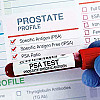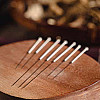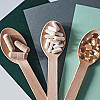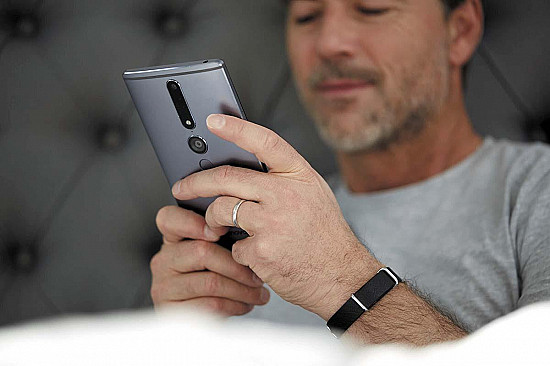What is a leadless pacemaker?
Today, nearly everyone who needs a pacemaker could be eligible for a new type that's smaller and safer.
- Reviewed by Christopher P. Cannon, MD, Editor in Chief, Harvard Heart Letter; Editorial Advisory Board Member, Harvard Health Publishing
If a slow or abnormal heart rhythm makes you dizzy or breathless or causes you to faint, you may need a pacemaker. These battery-powered devices constantly monitor your heartbeat and, if needed, send an electrical pulse to trigger a beat. As many as three million Americans have a pacemaker, and each year, another 200,000 get one.
Implanted in 1958, the very first pacemaker had multiple components, including a pulse generator about the size of a hockey puck. A modern-day pacemaker has a pulse generator about the size of two stacked silver dollars. This is implanted under the skin by the collarbone and connected to the heart by one or more flexible wires called leads (pronounced "leeds"; see top image). But today, there are also leadless pacemakers no bigger than a multivitamin pill — an advance that has dramatically reduced the risk of complications from these devices.
|
The larger surface area of a traditional pacemaker (above) makes it more prone to infections than a leadless device (below). Top image: © Trout55/Getty Images; bottom image: courtesy of Dr. Theofanie Mela |
The problem with leads
If you have any type of foreign object (a pacemaker or an artificial joint, for instance) inside your body, infection can be a serious problem. "If you have pneumonia, a urinary tract infection, or a skin infection, for example, bacteria can circulate through the bloodstream and may accumulate on the pacemaker components," says Dr. Theofanie Mela, director of the Pacemaker and ICD Clinic at Harvard-affiliated Massachusetts General Hospital. Pacemaker leads are about two feet long, which means the traditional devices have more surface area and are therefore more likely to become infected than leadless devices, she explains.
In addition, the pulse generator is inserted in a small pocket just under the skin of the upper chest. In about 1% to 3% of cases, infections develop from bacteria that enters the pocket when a pacemaker is first implanted or replaced. Other complications can occur over time: Leads can become dislodged, wear out, fray, or even break. Scar tissue or blood clots can form around the leads, which may hinder blood flow and cause pain and swelling.
The lead-free advantage
With leadless pacemakers, the implantation process is simpler and safer. A doctor inserts a catheter through a vessel in the groin and delivers the device into the wall of the heart — no pulse generator or wires needed. In the first three years after implantation, the complication rate was 4.1% for leadless pacemakers, compared to 8.5% for traditional pacemakers, according to a study published April 7, 2024, in the European Heart Journal.
Approved by the FDA in 2016, the first leadless pacemaker was a single unit placed in the heart's lower right chamber (ventricle). These early devices were appropriate for about 20% of people who were candidates for a pacemaker.
"The first-generation devices had limited features. But over time, researchers have perfected them, and now leadless pacemakers can do almost anything traditional pacemakers can do," says Dr. Mela. In 2023, the FDA approved the first dual-chamber leadless pacemaker, which features a second device in the heart's upper right chamber (atrium). The two devices communicate wirelessly with each other to better coordinate the heart's contractions.
Potential downsides
A leadless pacemaker costs two to three times as much as a traditional pacemaker, Dr. Mela says. However, the higher price may be justified if you take into account the lower rate of complications, which sometimes require removing the pulse generator and implanting a new one.
Because leadless pacemakers are relatively new, doctors have less experience with what happens with them over the long term. "For example, when the battery runs out after 10 years, can you safely extract the device and place a new one? We don't really know," Dr. Mela says. One possibility is to place a new device close to the first one. Possible limitations with that strategy include inadequate space and interference between the devices. For now, her practice implants leadless pacemakers mainly in older people, who are less likely to need multiple replacements during their lifetimes.
Looking to the future
Leadless pacemaker technology continues to evolve, including systems with batteries that last up to 17 years. Preliminary findings suggest the possibility of using electrical energy from heartbeats to partially recharge the device's battery. If your doctor says you need a pacemaker, ask if you're a candidate for a leadless device, Dr. Mela advises.
About the Author

Julie Corliss, Executive Editor, Harvard Heart Letter
About the Reviewer

Christopher P. Cannon, MD, Editor in Chief, Harvard Heart Letter; Editorial Advisory Board Member, Harvard Health Publishing
Disclaimer:
As a service to our readers, Harvard Health Publishing provides access to our library of archived content. Please note the date of last review or update on all articles.
No content on this site, regardless of date, should ever be used as a substitute for direct medical advice from your doctor or other qualified clinician.


















